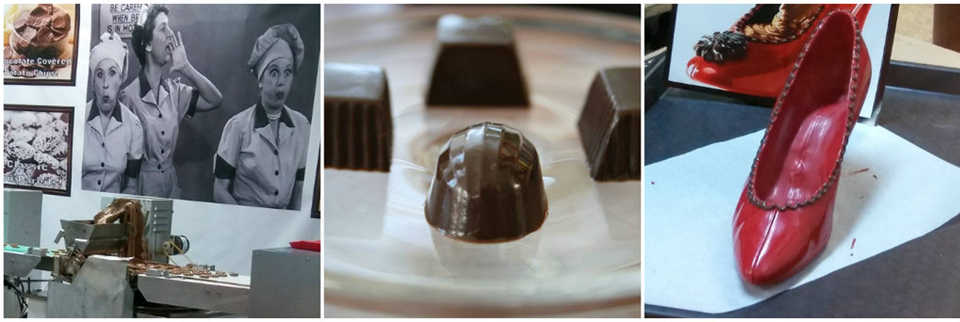Oh, my gosh! It hardly gets funnier than watching Lucy Ricardo and best friend Ethel Mertz working in a candy factory as inept candy wrappers. When the BFFs fall behind in their duties of wrapping candies as they speed by on the factory’s conveyor belt, the pair begins stuffing confections into their uniforms, under their hats and, with rapid fire, into their mouths.
In preparation for the iconic September 15, 1952 episode of the “I Love Lucy” show, “Job Switching,” Lucille Ball and cast trained at See’s Candies, which opened in Los Angeles, California, in 1921. I never resided in California, but I did live in Dallas, where See’s had a store. With its crisp “snap” when bitten into and the unmistakable mouthfeel of exceptional tempered chocolate, I acquired a taste for professionally made chocolates. If you are fortunate enough to live in an area where a candy shop exists, you are already familiar with the aroma that hits you the minute you walk through their door. Near where I live now, it’s like that at the Chocolate Tree, in Beaufort. The Chocolate Tree opened six years before I moved to the lowcountry, in 1980.
It was only a matter of time before I wanted to try making my own professional quality chocolates at home, and it took awhile before I got the hang of tempering chocolate, which is the art of melting chocolate so that it looks, tastes and behaves the way candy does when the pros make it. Mistakes are expensive, but most times, still make good eating.
If you think you’d like to make chocolates, seek chocolate from candy making sources that specialize in premium chocolate products. Most outlets also sell tempering machines for home use, but these are costly and can set you back well over $200, or more. Unless you plan to make a lot of chocolate, buy yourself a reliable candy thermometer for the job. When I make candy, I actually use two thermometers just to be sure I am getting true readings – a clip-on glass thermometer and an instant read digital probe-type thermometer.
Should you be intimated by the thought of tempering chocolate and don’t mind giving up the nuances that tempered chocolate provides, the recipes here may be made with chocolate that does not require tempering before use, such as chocolate candy melts, candy wafers, or “almond” bark, which actually does not contains almonds. No matter which kind of chocolate you purchase, go for the best you can afford. And, of course, should you crave chocolate and don’t wish to make it yourself, just go out and buy it – and stuff it anywhere it fits.

